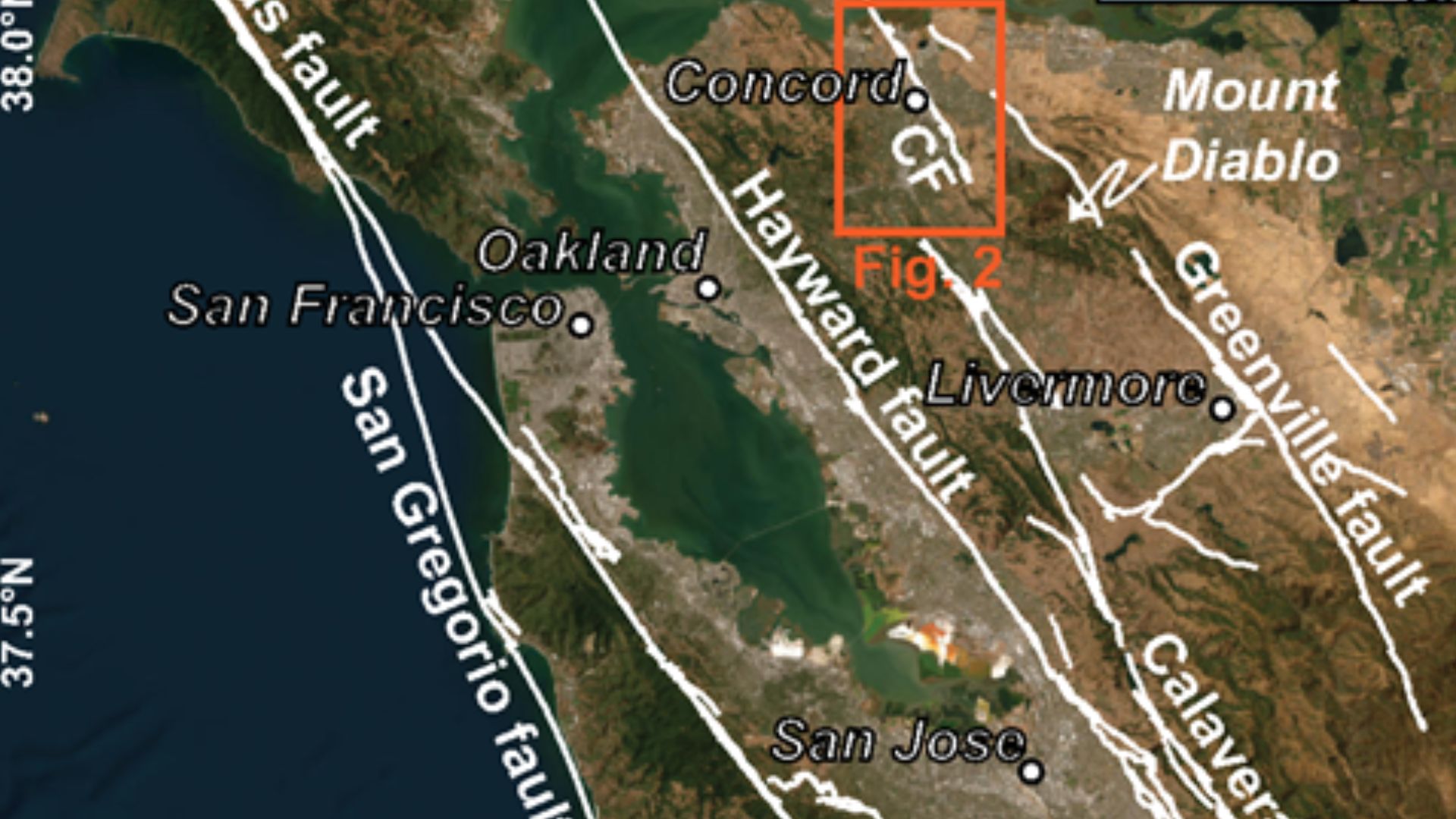
Researchers have identified an actively creeping section of the Concord Fault running through local communities in California, potentially increasing the risk of large earthquakes in residential neighborhoods.
According to the findings of a U.S. Geological Survey study, published by the Seismological Society of America on July 2, the Concord Fault not only has a creeping fault line, but the actively slipping section is not in the location it was previously believed to be.
Newsweek has contacted the U.S. Geological Survey via email for comment.
Why It Matters
The Concord Fault may be capable of magnitude 6.7 or higher earthquakes, given its 20 km (12.4 mile) length, the study saud. As urban development overlays much of its path, it puts tens of thousands at risk the havoc brought by earthquakes and seismic activity.
The fault runs through Walnut Creek and Concord, North Gate Road near Mount Diablo to Suisun Bay.
An earthquake of a smaller magnitude, 5.4, along the fault line caused major destruction across the area in 1955.
With this updated understanding, the California Geological Survey may designate the trace as part of an official Earthquake Fault Zone—a classification that would impact real estate disclosures, construction requirements, and long-term urban planning.

U.S. Geological Survey/Seismological Society of America
What To Know
Researchers of the study traced a 7 km segment of the fault, dubbed the Madigan Avenue strand, and found, after reviewing more 30 locations with visible curb and sidewalk displacements, that the fault is moving by approximately 3 millimeters per year—consistent with movement rates on the fault’s previously mapped northern half.
While it has been known for decades that the northern half of the Concord fault is steadily creeping, in an area covering Concord through Acme Landfill, in Martinez, there is less understanding of the true paths of the lines in the southern section.
The southern fault has moved the curbs as much as a handspan, around 18 centimeters, since the time they were installed, up to 60 years ago, the researchers found.
Previously, the creeping fault line was mapped along the edge of Lime Ridge, but it has now been found to travel under various neighborhoods, as well as through Valle Verde Elementary School, in Walnut Creek.
This means it is around 400 meters west of where the line was previously believed to run.
Having more precise identification of the creeping fault line’s location enables greater understanding of the seismic risks in the area, meaning that risk can be more accurately responded to.
The study’s authors emphasized that further research is necessary to determine whether previously undocumented strands of the Concord Fault may also exist, suggesting the region’s seismic hazard could be more complex than currently understood.
What People Are Saying
Andrew Alden, an Oakland-based geologist, wrote on his website responding to the study: “Although faults that creep—moving slowly between large earthquakes—might soften large quakes by releasing a little energy, creep does continuous quiet damage on its own thanks to shifted curbs and cracked pavements.”
He added: “The Concord fault is completely occupied by human structures, whereas the more familiar Hayward fault has a fair share of vacant land that isn’t harmed by either creep or quakes.”
He also wrote: “The south end of the fault is poorly mapped, and there are previous hints that it doesn’t match its official location. All of that makes it important to check the area for signs of creep and make measurements of any evidence on the ground.”
What Happens Next
As creeping fault line can cause damage to infrastructure and property, the new findings may prompt action from the California Geological Survey.
A formal designation of the area as an official earthquake fault zone, would impact real estate transactions, land use, and building codes.




